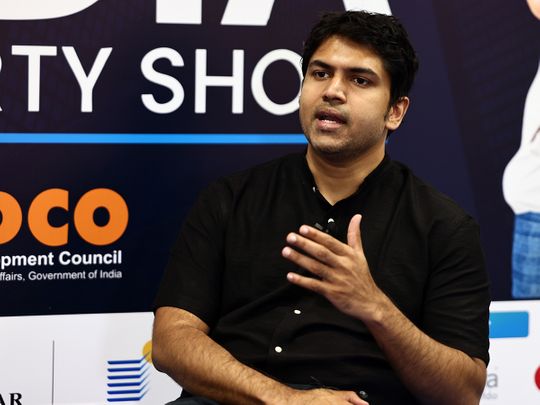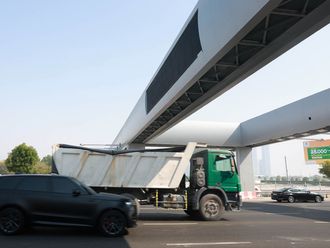
Dubai: NRIs are moving away from affordable properties and are seeking options in the ultra-luxury segment in India, a Hyderabad-based developer said at the Gulf News India Property Show in Dubai.
“Due to the currency value and the appetite of the NRI buyers to invest in India, the demand for luxury properties is really increasing because they get a sense of familiarity with what they expect outside India,” said Dheeraj Reddy, Sales Director of Pooja Crafted Homes.
Apart from this, the ease of maintenance is another factor that plays a big role in swaying buyers towards luxury properties.
“So it’s not only the property, but they also look at bundled services, and luxury properties are the ones that offer everything - concierge housekeeping, facilities and lifestyle amenities,” said Reddy. “So this is what is driving a lot of luxury sales in India.”
Defining luxury
Luxury is not about having the most expensive marble or the most exquisite kitchen, says Reddy.
“It’s about privacy,” he said. “This has come down to a generational gap coupled with post-Covid realities.”
Reddy says that the notion of living in certain areas or near malls has changed in the course of 10 years. He says when there is doorstep delivery of everything, from food to services, people have now pivoted towards spaces that are away from the city.
“Buyers are becoming very location-agnostic,” he said. “Now luxury is being defined as how far can I be from the general populace.”
“It’s more about: ‘How do I free up my time and focus on things that you want to do’, so I think that luxury starts getting defined in this different paradigm of privacy of earning more time in the day and productivity.”
Stretch your budget
Reddy reckons if buyers can stretch their budget and not go with set numbers to the developers, they can get amenities of their choice.
“A lot of buyers are constrained because everybody goes to the market saying this is my budget and what is the best that I can get in it? But unfortunately, that’s where it ends. When somebody is able to stretch their budget a bit more, then they start looking at personalisations.”
One of the most sought-after amenities in the luxury segment is a clubhouse and open space.
“Private chefs and butlers are always for the top 1 per cent. But this is what differentiates a normal project from an extraordinary one, it’s when you start with these amenities, open spaces, probably having a daycare,” said Reddy.
The NRIs have already started stretching their budgets in order to meet convenience.
“They just want to pick up the phone, somebody answers and maintenance is there 24/7,” said Reddy. “If you wanted a plumber three or four years back, you had to probably set up an appointment, but today you have apps that send you a plumber in 20 minutes.
Adding the edge
A lot of real estate companies, to differentiate themselves on the luxury factor, are setting up in-house teams.
“So we are recruiting people with hotel backgrounds, who have done housekeeping, who have worked in leading hotels around the world, to set up teams and train people,” said Reddy. “Ultimately people want white gloved uniformed service that gives you an edge in the market.”
Environmentally conscious clients
India is still awaiting guidelines for building codes on electric charging stations, but that doesn’t keep environmentally conscious clients from demanding such facilities.
“What people really want is a lot of landscape and vegetation in, around and on the building,” said Reddy. “A lot of clients today insist in terms of greenscaping the building instead of making it in a concrete jungle.”
Why now?
The reason you must invest in India’s luxury launches are because they are very few in number, said Reddy.
“You’re not getting a lot of luxury launches, compared to how it was a few years back because most of the developers are focusing towards budget homes and larger townships,” he said. “The primary reason to invest in the high-end luxury market in India is because of limited supply and most of the inventory is close to complete or already completed.”
According to Reddy, with the Indian currency depreciating in value, ultra-luxury projects are ‘just a bargain’.
“In Hyderabad, you would get a top-notch luxury the highest spec at roughly around say Rs14,000 per square feet whereas if you come to Dubai and you pick up any property it is close to Rs60,000 per square feet.”
“I think we’re at least one-third cheaper than anywhere else across the globe,” said Reddy. “So for the same amount of money that you’re willing to write a cheque, I think India is going to offer you very good stuff at close to half the price compared to the other countries.”
Organised by Maxpo Exhibitions, in association with National Real Estate Development Council (NAREDCO), the two-day event recorded over 75 property transactions worth Dh58m+.
With over 2500 footfalls, Gulf News India Property Show hosted developers from across the country showcasing more than 500 residential and commercial properties in India.
The top five cities that sealed the deal in the two-day events are: Mumbai, Pune Bengaluru, Chennai, and Kerala








